10 Egg Dishes You Might Encounter While Traveling
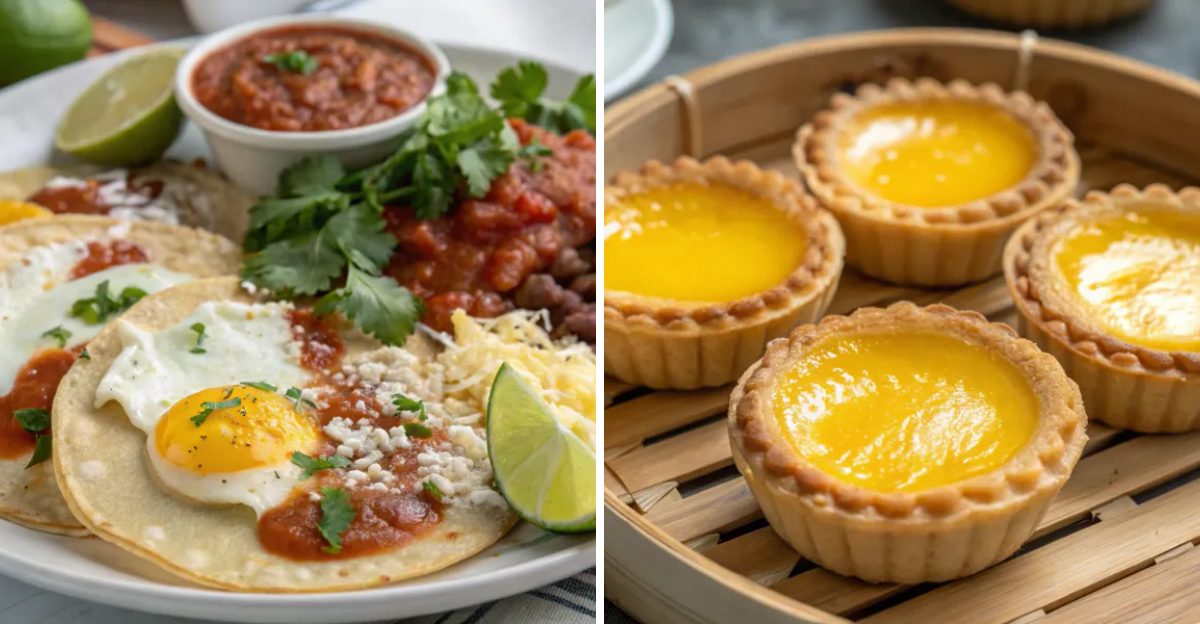
Traveling opens doors to versatile culinary experiences, and eggs appear in dishes worldwide in fascinating ways. From street food stalls to fancy restaurants, different cultures have developed their own methods of preparing this versatile ingredient. Each country brings its own flavors, spices, and cooking techniques to make eggs taste completely different from what you might expect at home.
1. Menemen (Turkey)
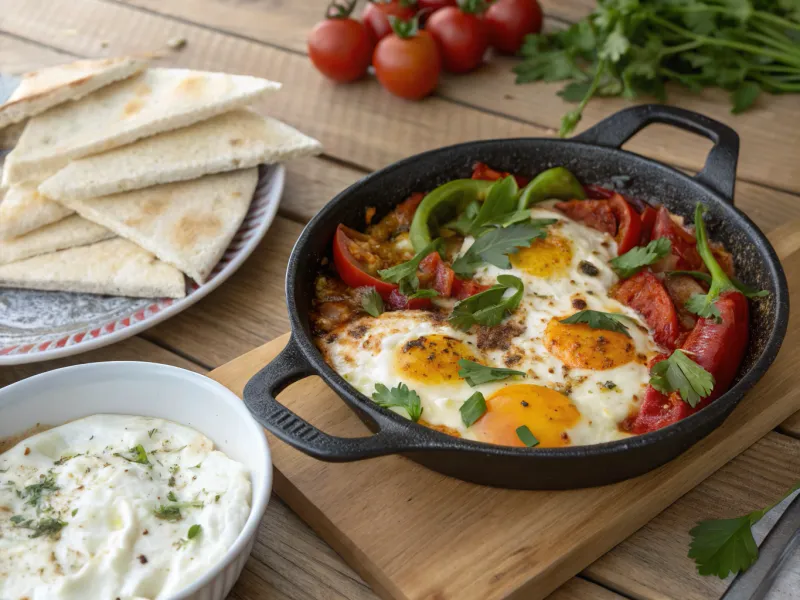
Turkish breakfast tables feature this hearty dish that combines scrambled eggs with fresh tomatoes and green peppers. The eggs cook slowly in the vegetable mixture, absorbing all the flavors from the peppers and tomatoes. Cooks add Turkish spices like red pepper flakes and sometimes onions to build layers of taste. The dish stays moist and flavorful because the vegetables release their juices during cooking. Restaurants serve menemen in the same pan it cooks in, keeping it warm throughout the meal. Most people eat it with thick yogurt and fresh bread to balance the rich flavors.
2. Huevos Rancheros (Mexico)
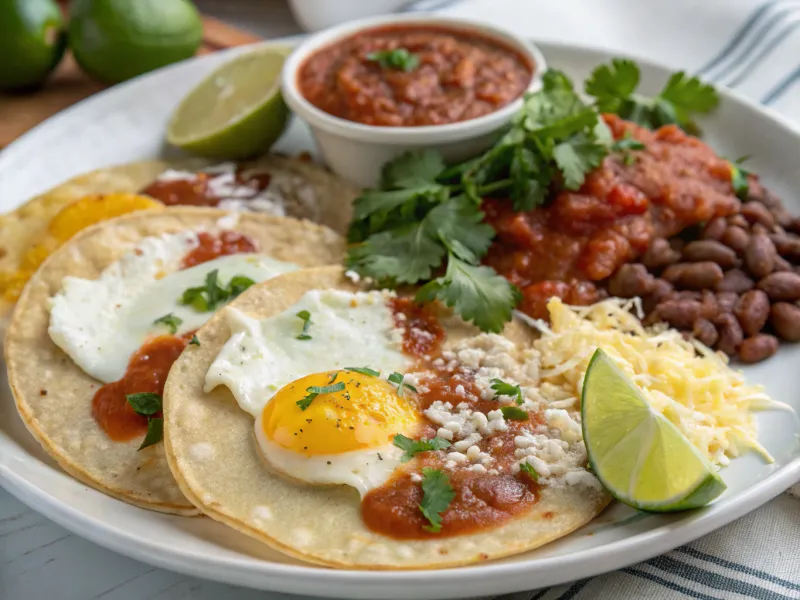
Mexican kitchens serve this filling breakfast on crispy corn tortillas topped with fried eggs. The eggs sit on top of a bed of warm refried beans and get covered with spicy tomato salsa. Each region in Mexico makes the salsa differently, using local peppers and seasonings. Some cooks add cheese on top while others include avocado slices or fresh cilantro for extra flavor. The combination of textures makes this dish interesting to eat. The runny egg yolk mixes with the salsa and beans, adding a rich sauce that soaks into the tortilla underneath.
3. Tamagoyaki (Japan)
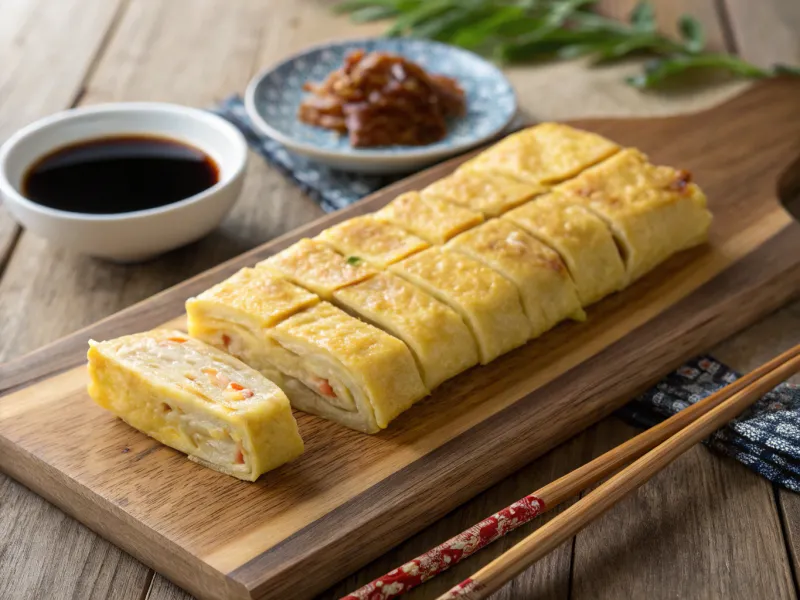
Japanese cooks make this rolled omelet by layering thin sheets of seasoned beaten eggs in a rectangular pan. Each layer gets rolled carefully to form a thick, rectangular block with visible layers inside. The eggs can be seasoned with sugar for a sweet version or with soy sauce and mirin for a savory taste. Making tamagoyaki requires practice because the rolling technique takes skill to master. Sushi restaurants often include pieces of tamagoyaki in their offerings. The smooth texture and mild flavor make it popular with both children and adults who enjoy Japanese cuisine.
4. Egg Foo Young (China)
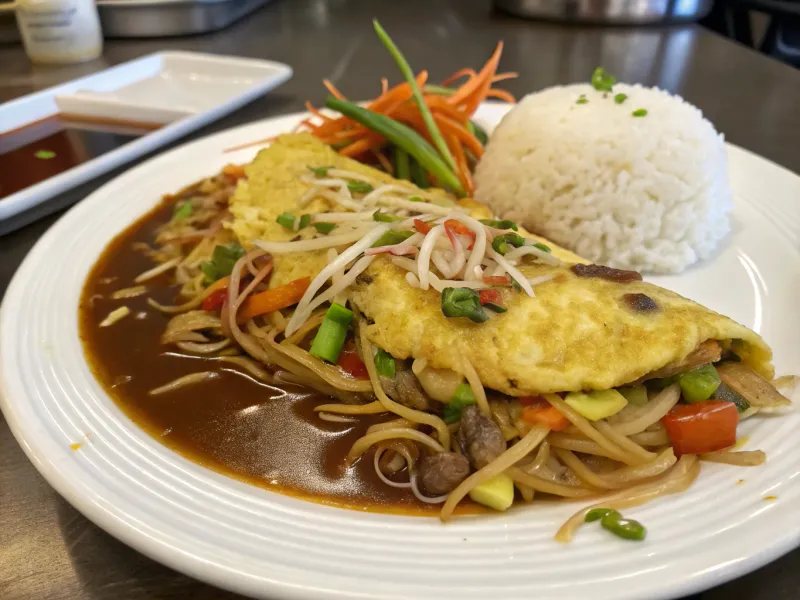
Chinese restaurants prepare this thick omelet by mixing beaten eggs with fresh bean sprouts, mushrooms, and chopped onions. The mixture gets cooked like a pancake until the outside becomes golden and slightly crispy. Cooks often add chicken or shrimp to make the dish more filling. The omelet stays fluffy inside while developing a firm exterior that holds all the ingredients together. A brown gravy made from chicken broth and soy sauce usually comes poured over the top. This sauce adds moisture and extra flavor that complements the mild taste of the eggs and vegetables inside.
5. Shakshuka (Middle East)
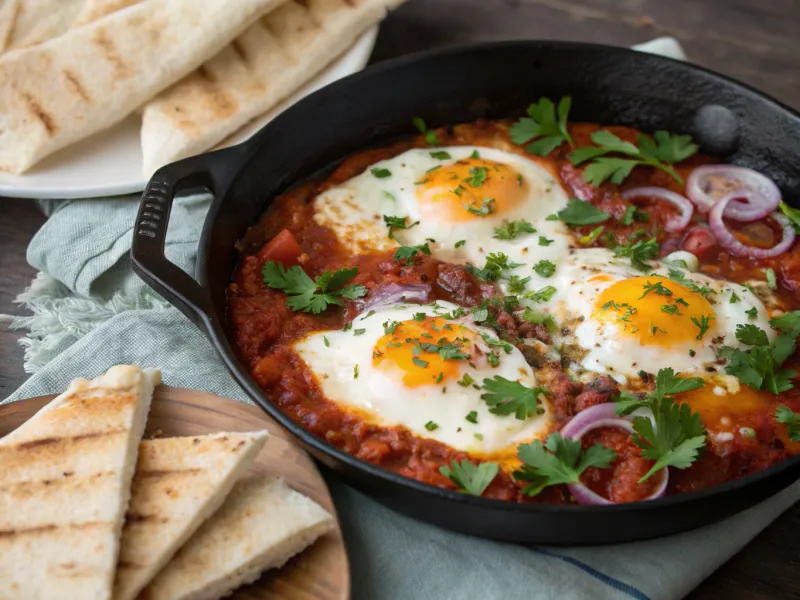
Middle Eastern kitchens simmer tomatoes with onions, garlic, and spices to make a thick, flavorful sauce. Cooks crack whole eggs directly into this bubbling mixture, letting them poach gently in the hot sauce. The tomato base gets its heat from cumin, paprika, and sometimes hot peppers. Each region adds different spices, but the combination always creates a rich, aromatic sauce that coats the eggs. The dish arrives at the table in the same pan used for cooking, keeping everything hot. People dip pieces of bread into the sauce and eat the runny eggs mixed with the spicy tomato base.
6. Egg Tart (China)

Chinese bakeries make these small pastries by filling buttery, flaky crusts with smooth egg custard. The custard combines eggs, milk, and sugar to create a creamy filling that sets when baked. Bakers cook the tarts at high heat first to set the custard, then lower the temperature to finish cooking without burning the tops. The finished tarts have a slightly caramelized surface with a wobbly center. Hong Kong tea houses serve these tarts warm as afternoon snacks. The contrast between the crispy pastry shell and the silky custard inside makes them a beloved treat throughout southern China.
7. Gyeran-jjim (Korea)
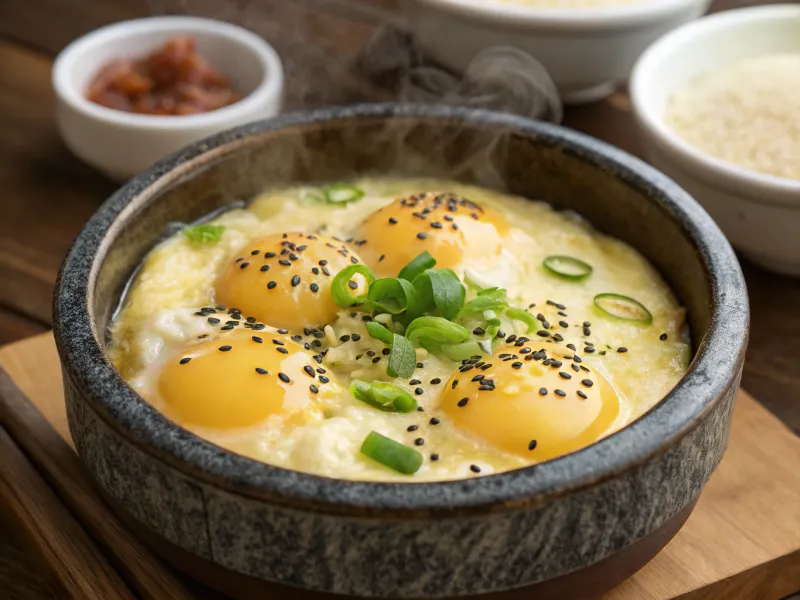
Korean cooks steam beaten eggs in small stone bowls to create this fluffy, custard-like side dish. The eggs get mixed with a small amount of water or broth before steaming, which makes them incredibly light and airy. Traditional recipes include tiny dried shrimp or fish sauce for umami flavor. The steaming process happens slowly over low heat, allowing the eggs to puff up and become almost souffle-like in texture. Restaurants serve gyeran-jjim alongside Korean barbecue or rice dishes. The mild, creamy texture provides a cooling contrast to spicy Korean foods, and the presentation in individual stone bowls keeps each serving warm.
8. Kwek Kwek (Philippines)
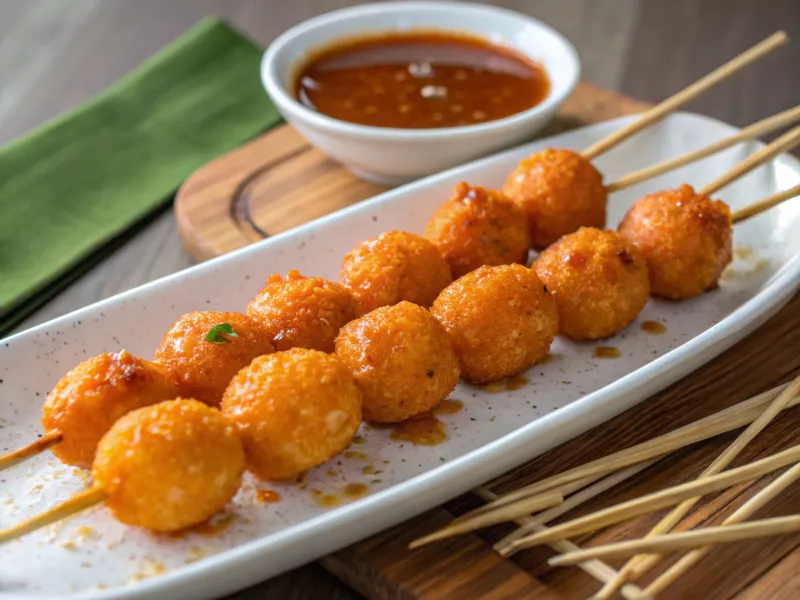
Filipino street vendors coat hard-boiled quail eggs in bright orange batter made from flour, water, and food coloring. The coated eggs get deep-fried until the outside becomes crispy and the color turns deep orange. Each egg gets skewered on a wooden stick, making them easy to eat while walking. The batter stays crunchy on the outside while the quail egg inside remains tender and flavorful. Vendors serve kwek kwek with sweet and sour dipping sauce or spiced soy sauce. The small size makes them suitable for snacking, and the bright color makes them easy to spot at busy street food markets.
9. Eggah (Egypt)
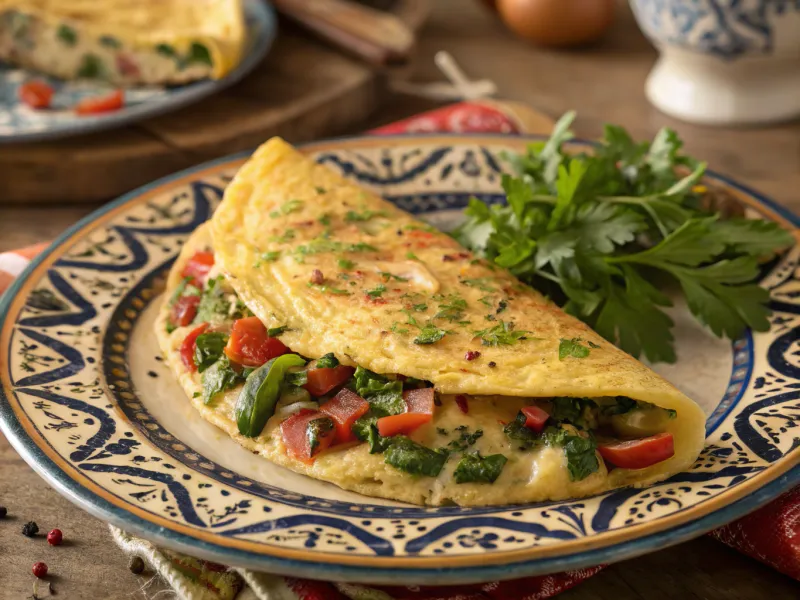
Egyptian cooks make this thick omelet by beating eggs with chopped parsley, onions, tomatoes, and bell peppers. The mixture gets cooked slowly in a large pan until it becomes firm enough to flip or finish under the broiler. Unlike thin omelets, eggah resembles a frittata because of its thickness and the large amount of vegetables mixed throughout. The herbs and vegetables distribute evenly, creating colorful layers in every slice. Families often serve eggah at room temperature, making it convenient for picnics or packed lunches. The combination of fresh herbs and vegetables makes it nutritious and flavorful, while the eggs provide protein and hold ingredients together.
10. Scotch Eggs (England)
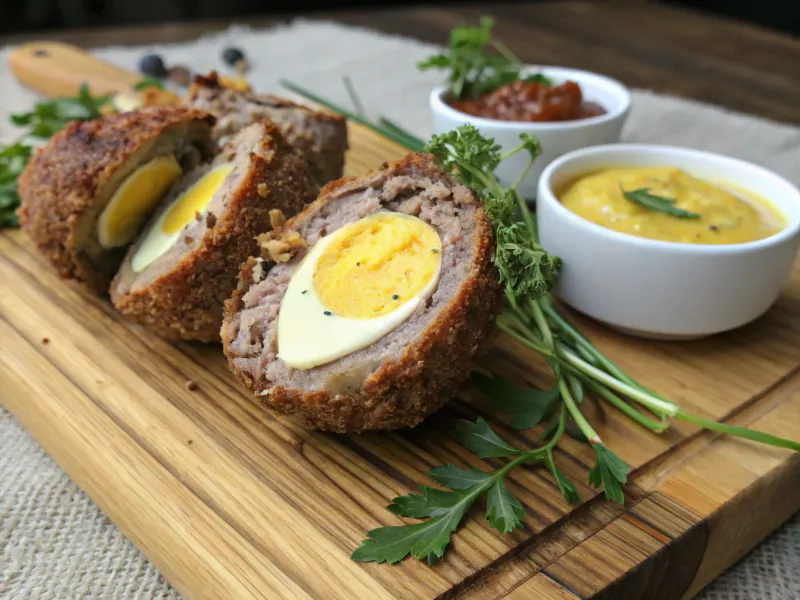
British pubs serve these hard-boiled eggs wrapped in seasoned ground meat and coated with breadcrumbs. The eggs get completely encased in the meat mixture, then rolled in breadcrumbs before being deep-fried until golden brown. Traditional recipes use a mixture of ground beef and herbs to wrap around each egg. The meat layer should be thick enough to stay together during cooking but not so thick that it overwhelms the egg inside. The finished dish has a crispy exterior that gives way to tender meat and a firm egg center. Pubs typically serve Scotch eggs with mustard or brown sauce, and they work well as bar snacks or lunch items.
